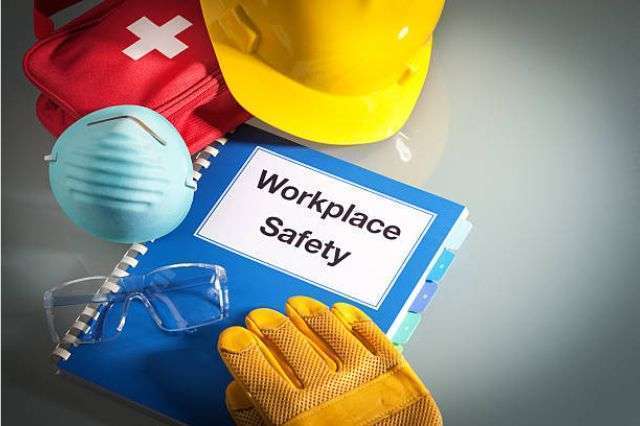How to Write a Health and Safety Policy for Your Business: A Step-by-Step Guide
A health and safety policy is a crucial document that outlines a company’s commitment to providing a safe and healthy workplace for its employees. It is a legal requirement for businesses to have a health and safety policy in place, and failure to do so can result in serious consequences. Writing a health and safety policy can seem like a daunting task, but it is essential for the well-being of employees and the success of the business.
The first step in writing a health and safety policy is to identify the hazards and risks present in the workplace. This involves conducting a thorough risk assessment to identify potential hazards and evaluate the level of risk associated with each one. Once the hazards have been identified, the next step is to implement measures to control and mitigate those risks. This may involve introducing new procedures, providing training to employees, or investing in new equipment or technology. The policy should also outline the responsibilities of employees, management, and other stakeholders in maintaining a safe and healthy workplace.
- Identifying Potential Hazards
- Creating a Safety Policy
- Implementing the Policy
- Monitoring and Review
- Legal Compliance
Identifying Potential Hazards
To create an effective health and safety policy, it is essential to identify all potential hazards in the workplace. This involves conducting a thorough assessment of the workplace and the tasks performed by employees.
Some potential hazards that businesses should be aware of include:
- Physical hazards: These include slips, trips, falls, and ergonomic hazards such as repetitive motion injuries.
- Chemical hazards: These include exposure to toxic substances, such as cleaning chemicals or fumes from machinery.
- Biological hazards: These include exposure to viruses, bacteria, and other pathogens.
- Radiation hazards: These include exposure to ionizing radiation, such as X-rays or radioactive materials.
- Electrical hazards: These include exposure to electrical shock or electrocution.
To identify potential hazards, businesses should conduct a comprehensive risk assessment. This involves:
- Identifying hazards: This involves identifying all possible hazards in the workplace, including those that may be unique to a particular industry or business.
- Assessing the risk: Once hazards have been identified, the next step is to assess the risk associated with each hazard. This involves determining the likelihood of an incident occurring and the severity of the consequences.
- Controlling the risk: Finally, businesses should take steps to control the risk associated with each hazard. This may involve implementing engineering controls, such as installing safety guards on machinery, or administrative controls, such as developing safe work practices and providing training to employees.
By identifying potential hazards and taking steps to control the risk associated with these hazards, businesses can create a safer and healthier workplace for their employees.
Creating a Safety Policy
When creating a safety policy for your business, it’s important to keep in mind that the policy should be tailored to your specific industry and workplace. Here are a few general steps to follow when creating a safety policy:
- Identify potential hazards: The first step in creating a safety policy is to identify potential hazards in the workplace. This may include physical hazards (such as machinery or equipment), chemical hazards (such as cleaning products), or biological hazards (such as exposure to viruses or bacteria).
- Assess risks: Once potential hazards have been identified, it’s important to assess the risks associated with each hazard. This involves determining the likelihood and severity of potential injuries or illnesses that could result from each hazard.
- Develop control measures: After assessing the risks associated with each hazard, the next step is to develop control measures to minimize or eliminate those risks. This may involve implementing engineering controls (such as installing guards on machinery), administrative controls (such as establishing safety procedures), or personal protective equipment (such as gloves or safety glasses).
- Communicate the policy: Once the safety policy has been developed, it’s important to communicate it to all employees. This may involve providing training on the policy, posting signs throughout the workplace, or including the policy in employee handbooks.
- Review and update the policy: Finally, it’s important to review and update the safety policy on a regular basis to ensure that it remains effective and relevant. This may involve conducting regular safety audits, soliciting feedback from employees, or updating the policy to reflect changes in the workplace or industry.
Implementing the Policy
Once a health and safety policy has been developed, it is important to ensure that it is effectively implemented throughout the organization. This section outlines some key steps that businesses can take to implement their health and safety policies.
-
Communicate the Policy
The first step in implementing a health and safety policy is to communicate it to all employees. This can be done through a variety of channels, including company-wide meetings, email, and internal newsletters. It is important to ensure that all employees understand the policy and their role in implementing it.
-
Provide Training
Training is an essential part of implementing a health and safety policy. All employees should receive training on the policy and any procedures that are relevant to their role. This can include training on how to use personal protective equipment, how to respond to emergencies, and how to report hazards.
-
Monitor and Review
Once the policy has been implemented, it is important to monitor its effectiveness and review it regularly. This can involve conducting regular inspections and audits to identify any areas where improvements can be made. It is also important to review the policy in light of any changes to legislation or best practice.
-
Encourage Employee Involvement
Employee involvement is key to the success of any health and safety policy. Businesses should encourage employees to report hazards and suggest improvements to the policy. This can be done through regular safety meetings, suggestion boxes, and other communication channels.
By following these steps, businesses can effectively implement their health and safety policy and ensure the safety and well-being of their employees.
Monitoring and Review
Once the health and safety policy has been implemented, it is important to monitor and review it regularly to ensure that it remains effective and relevant. Regular monitoring and review will help to identify any areas that require improvement or where the policy may no longer be effective.
The frequency of monitoring and review will depend on the size and complexity of the business and the risks involved. However, it is recommended that the policy is reviewed at least annually or whenever there are any significant changes in the business operations or the legislation.
To monitor the policy, the following steps can be taken:
- Regular inspections of the workplace to ensure that the policy is being followed and that any hazards or risks are being identified and addressed.
- Regular meetings with employees to discuss any health and safety concerns they may have and to ensure that they are aware of the policy and their responsibilities.
- Regular reviews of accident and incident reports to identify any trends or patterns that may indicate a need for improvement.
To review the policy, the following steps can be taken:
- A review of any changes to legislation or regulations that may impact the policy.
- A review of any changes to the business operations or processes that may impact the policy.
- A review of any accidents or incidents that have occurred to identify any areas where the policy may need to be revised or improved.
It is important to involve employees in the monitoring and review process as they are often the best source of information about the effectiveness of the policy. By involving employees, the business can ensure that the policy remains relevant and effective in addressing the risks and hazards associated with the workplace.
Legal Compliance
Ensuring legal compliance is a crucial aspect of developing a health and safety policy for your business. By complying with relevant laws and regulations, you can protect your employees and your business from legal liabilities and penalties.
To ensure legal compliance, it is important to identify and understand the relevant laws and regulations that apply to your business. This may include federal, state, and local regulations, as well as industry-specific standards and guidelines.
Some key areas to consider when assessing legal compliance include:
- Occupational Safety and Health Administration (OSHA) regulations
- Environmental Protection Agency (EPA) regulations
- Americans with Disabilities Act (ADA) requirements
- Fair Labor Standards Act (FLSA) requirements
- State and local employment laws
Once you have identified the relevant laws and regulations, you can develop policies and procedures to ensure compliance. This may include implementing safety training programs, conducting regular safety inspections and audits, and maintaining accurate records of safety incidents and corrective actions taken.
It is important to note that legal compliance is not a one-time event, but an ongoing process. As laws and regulations change, it is important to review and update your policies and procedures to ensure continued compliance. By staying up-to-date on legal requirements and taking proactive steps to ensure compliance, you can protect your employees and your business from legal risks and liabilities.



![Entrepreneurial Story of the Igwe Twins [Started as Office Cleaners]](https://thetotalentrepreneurs.com/wp-content/uploads/2016/09/Entrepreneurial-Story-of-the-Igwe-Twins-Started-as-Office-Cleaners-SpeedMeals-Mobile-Kitchen.png)

